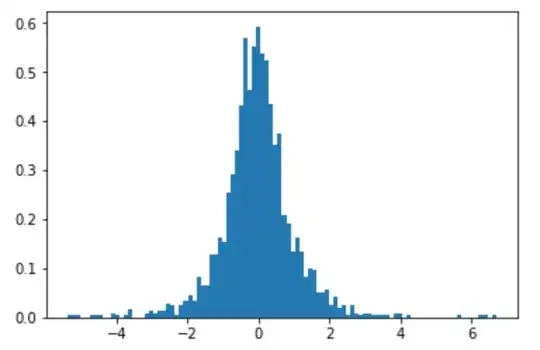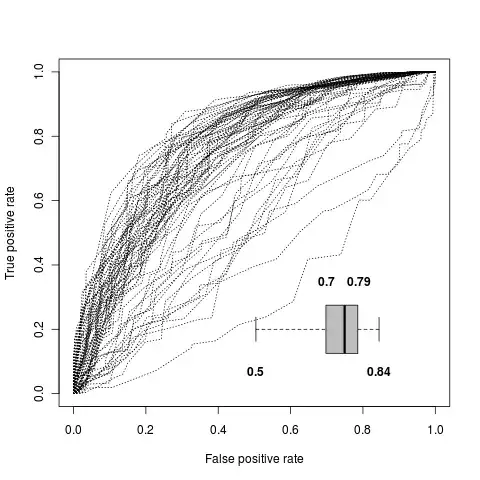Let $(X_n)$ be a sequence of i.i.d $\mathcal N(0,1)$ random variables. Define $S_0=0$ and $S_n=\sum_{k=1}^n X_k$ for $n\geq 1$. Find the limiting distribution of $$\frac1n \sum_{k=1}^{n}|S_{k-1}|(X_k^2 - 1)$$
This problem is from a problem book on Probability Theory, in the chapter on the Central Limit Theorem.
Since $S_{k-1}$ and $X_k$ are independent, $E(|S_{k-1}|(X_k^2 - 1))=0$ and $$V(|S_{k-1}|(X_k^2 - 1)) = E(S_{k-1}^2(X_k^2 - 1)^2)= E(S_{k-1}^2)E(X_k^2 - 1)^2) =2(k-1)$$
Note that the $|S_{k-1}|(X_k^2 - 1)$ are clearly not independent. The problem is from Shiryaev's Problems in Probability, which is itself based on the textbook from the same author. The textbook does not seem to cover the CLT for correlated variables. I don't know if there's a stationary, mixing sequence hiding somewhere...
I have run simulations to get a feel of the answer
import numpy as np
import scipy as sc
import scipy.stats as stats
import matplotlib.pyplot as plt
n = 20000 #summation index
m = 2000 #number of samples
X = np.random.normal(size=(m,n))
sums = np.cumsum(X, axis=1)
sums = np.delete(sums, -1, 1)
prods = np.delete(X**2-1, 0, 1)*np.abs(sums)
samples = 1/n*np.sum(prods, axis=1)
plt.hist(samples, bins=100, density=True)
x = np.linspace(-6, 6, 100)
plt.plot(x, stats.norm.pdf(x, 0, 1/np.sqrt(2*np.pi)))
plt.show()
Below is a histogram of $2000$ samples ($n=20.000$). It looks fairly normally distributed...

